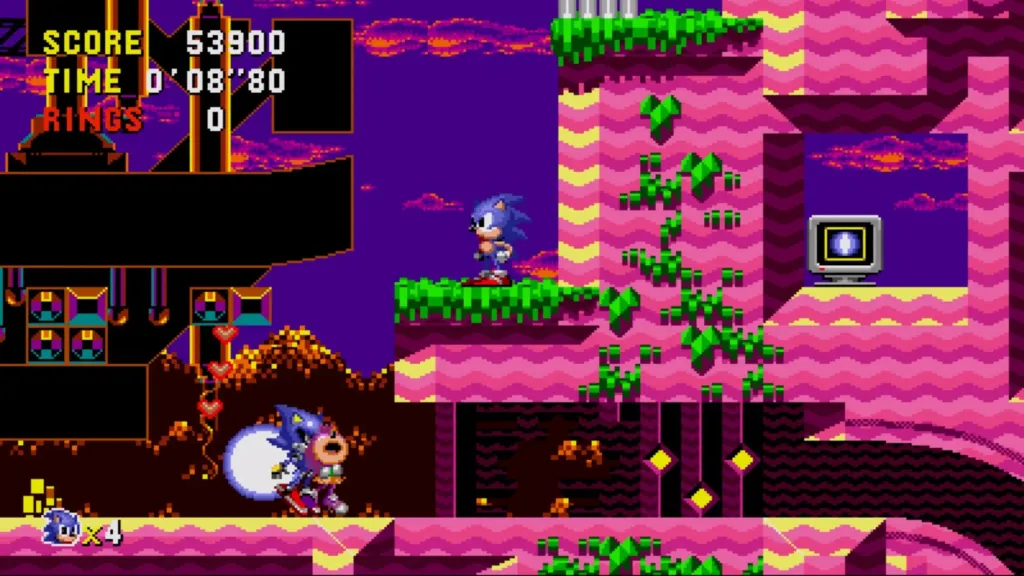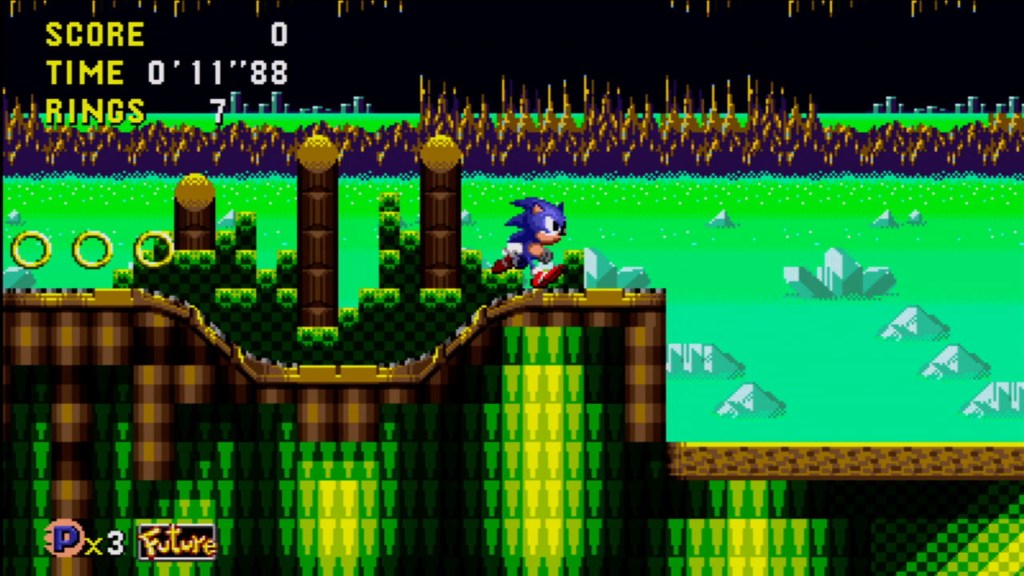Sonic the Hedgehog was an almost instant hit for Sega. Launching alongside the Sega Genesis and becoming the first genuine rival to Mario in years, Sonic quickly got multiple sequels moved into development. While the franchise’s early era would continue to be expanded on the Genesis and then the Saturn, another Sega console
Videos by ComicBook.com
Sonic CD was released 32 years ago on November 23, 1993, and while it never got the attention of its Sega Genesis cousins, this Sega CD title has had a lot more impact on the franchise as a whole than most fans realize. More than that, Sonic CD actually serves as an early home console tease of the direction that gaming as a whole would soon be heading towards — making it a unique chapter in the publisher’s history.
How A Sonic Port Transformed Into One Of The Best Sonic Games

Sonic the Hedgehog CD began life as a straightforward port of 1991’s Sonic the Hedgehog from the Sega Genesis, but the developers on the title decided to create something new that could highlight the new potential of the Sega CD. The game was built on the underlying game design of the first Sonic the Hedgehog, with a control scheme and level layout matching the original in many regards.
However, the crisper graphics and clearer music were a huge improvement. The use of CD, then a relatively new commercially available device, opposed to the traditional cassettes, highlighted the potential of the evolution in console gaming. As development continued, Sonic CD director Naoto Ohshima took inspiration from Back to the Future and the team implemented a time-travel mechanic that showcased the maps across different periods — with the player’s skills in the main game impacting the finale’s visuals.
The time-travel element became an important throughline of the level design, creating an entire world for Sonic players to explore through different periods. It provided the developers plenty of opportunity to experiment with the presentation and push the Sega CD to the limits. From a technical standpoint, Sonic CD is a genuine highlight of the early days of the series and proof for plenty of gamers that console games that used discs might have a better shot at greater potential than cartridges.
Sonic CD Introduced Amy Rose And Metal Sonic

The most important addition that Sonic CD brought to the franchise was two new side-characters, Amy Rose and Metal Sonic. The latter is one of the franchise’s most consistent antagonists, with games like Sonic Heroes and Sonic Mania morphing the robotic duplicate of the blue hedgehog into a major threat to heroes and villains alike. Metal Sonic gave the game a direct antagonist to Sonic who, as opposed to the way future rivals for the hedgehog would gradually turn into reluctant allies, remains one of the franchise’s most consistent villains.
The bigger addition, however, was Amy Rose. The young pink hedgehog was introduced in Sonic CD and quickly graduated to the main cast of characters in the franchise by the time of Sonic Adventure. The hammer-wielding hedgehog is often portrayed as a potential love interest for Sonic (whether or not Sonic likes it), providing plenty of comic relief over the years. However, she’s also been one of the more consistent side-characters to be made playable in various releases, speaking to her enduring popularity with the playerbase.
Both characters have become consistent fixtures of the franchise, speaking to the lasting legacy of Sonic CD, even if many players really got into it thanks to compilation re-releases of the franchise’s early entries. It’s important to remember just how early in the series this was. Technically the third console entry in the franchise, Sonic CD brought in Amy and Knuckles even before characters like Knuckles had made their debut.
Sonic CD’s Legacy Is More Important Now Than Ever

Sonic CD may not have been the best-selling entry in the Sonic series — it only sold 1.5 million copies compared to the far more mainstream success of Sonic the Hedgehog and Sonic the Hedgehog 2, but that can be partly blamed on the necessity of the Sega CD. Despite that, the game earned strong reviews from critics, who complimented the game’s refined elements and time-travel-centric level design. Sonic CD had a longer legacy on the franchise as a whole than it initially seemed, however.
The game highlighted the developing trend of shifting console games to discs, which became the norm over time. Sonic CD’s introduction of the characters into the franchise gives it an important place in the series’ history instead of just being an outlier. The game is even set to serve as the primary inspiration for Sonic the Hedgehog 4, the next film in the cinematic adaptation of the series.
Sonic CD was an early but important advancement for the series and a reminder of how creative the game’s execution could be while retaining the tighter elements and pixel art of the original games. Games like Sonic Mania took those lessons and ran with them, delivering on the promise of the ever-evolving game development and making it into something bigger and bolder.








